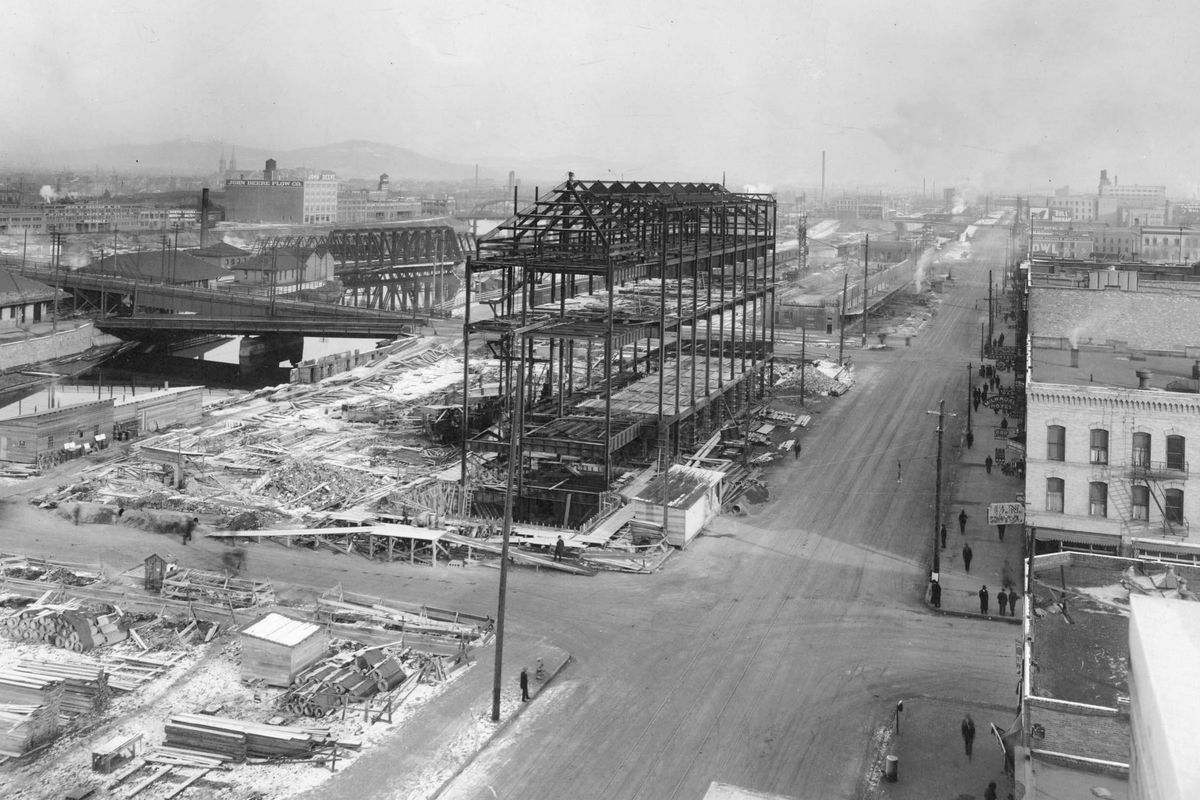Then and Now: Union Station

Historian Robert Hyslop, in his book “Spokane Building Blocks,” explains why Spokane’s Union Station, shown under construction in 1913, was called a station and not a depot. There had already been a Union Depot in Spokane serving the OR&N, the Union Pacific and the Great Northern in Spokane’s earliest days. In addition, people thought the word “depot” was old-fashioned and “station” was more stylish.
Robert Strahorn’s company, North Coast, began buying land along Front Street, later called Trent Avenue and now Spokane Falls Boulevard, several years before Union Station was built, secretly financed by unnamed railroad tycoons of the era. But first Strahorn had to convince the city to give up its city hall to clear the way for tracks to the station. The new station opened in 1914 to provide depot services to the Chicago, Milwaukee, St. Paul and Pacific Railroad, known as the Milwaukee Road, the OWR&N, part of Union Pacific, and Strahorn’s own North Coast, among others.
Structural steel like that used in the Union Station wasn’t possible until steel production was revolutionized in the 1850s and 1860s. Architects in the late 1800s began using structural steel skeletons to take the load off of the brick walls of a building, allowing for safer buildings and thinner walls.
The skeleton of Union Station, which was integral to the elevated tracks, was later encased in poured concrete for even more strength to resist the vibration of several tracks full of trains moving past the station.
When Expo ’74 was on the drawing board, some in Spokane wanted to save the old station for its classic architecture and historical significance. Perhaps it could be part of Expo and later used as a museum or park building, the thinking went. Hyslop wrote, “but the desire for newness overcame the appreciation of durability.”
Crews found out that the building resisted demolition. The concrete-encased beams resisted the wrecking ball and would not allow access to the steel beams for a cutting torch to assist. Eventually it came down, and Hyslop lamented that the resulting space was only occupied by the Ford Motor Car exhibit, in a geodesic dome, at Expo. Today, the location is the site of Red Wagon play area and the Garbage Goat.